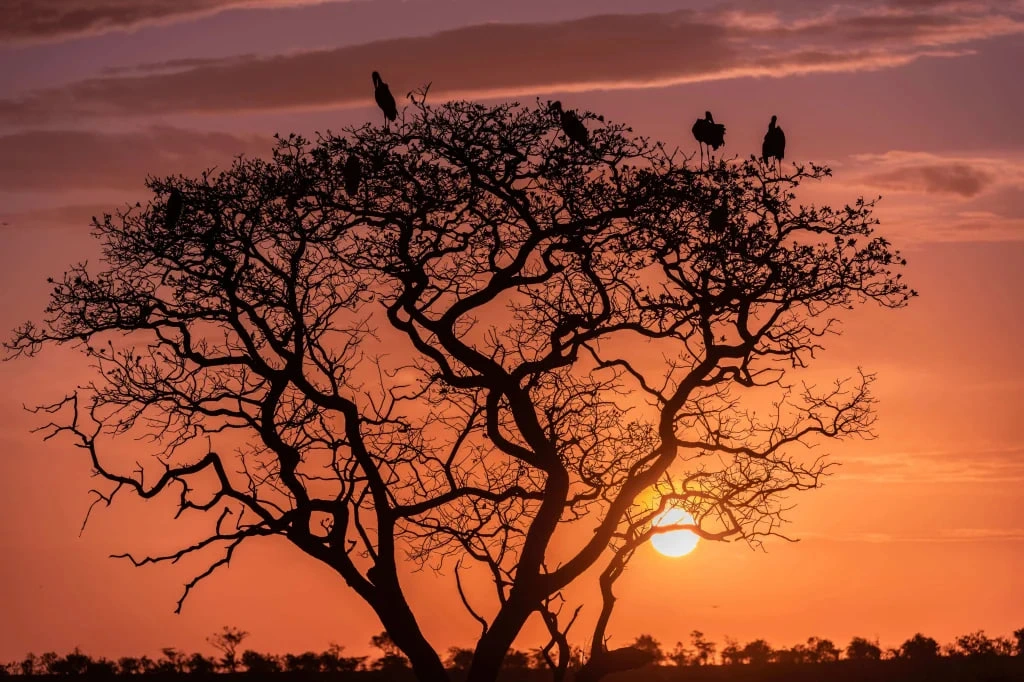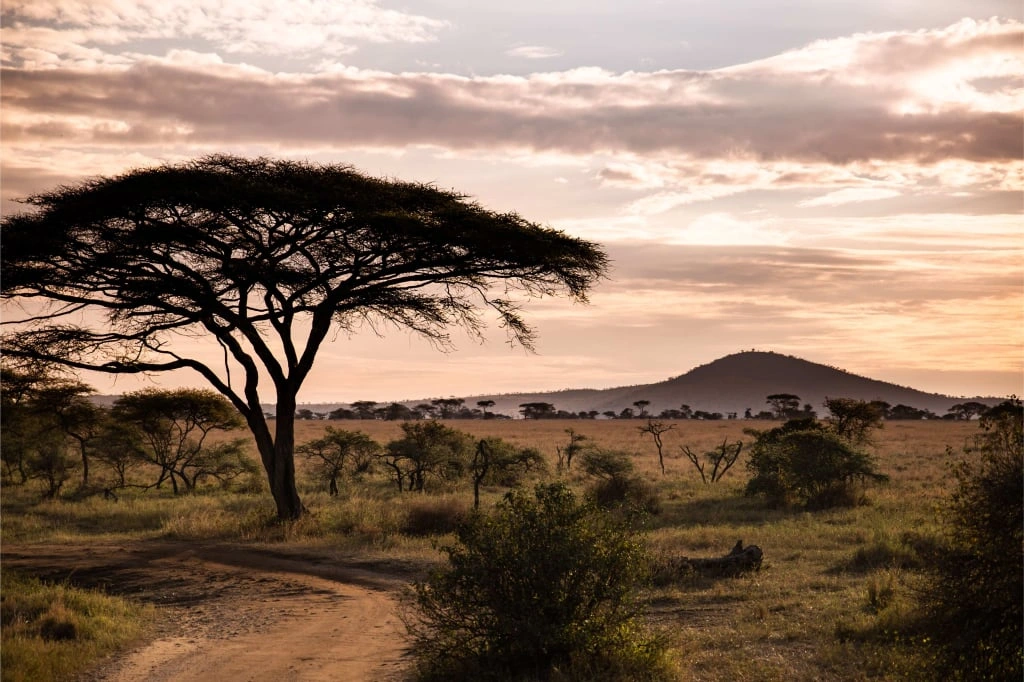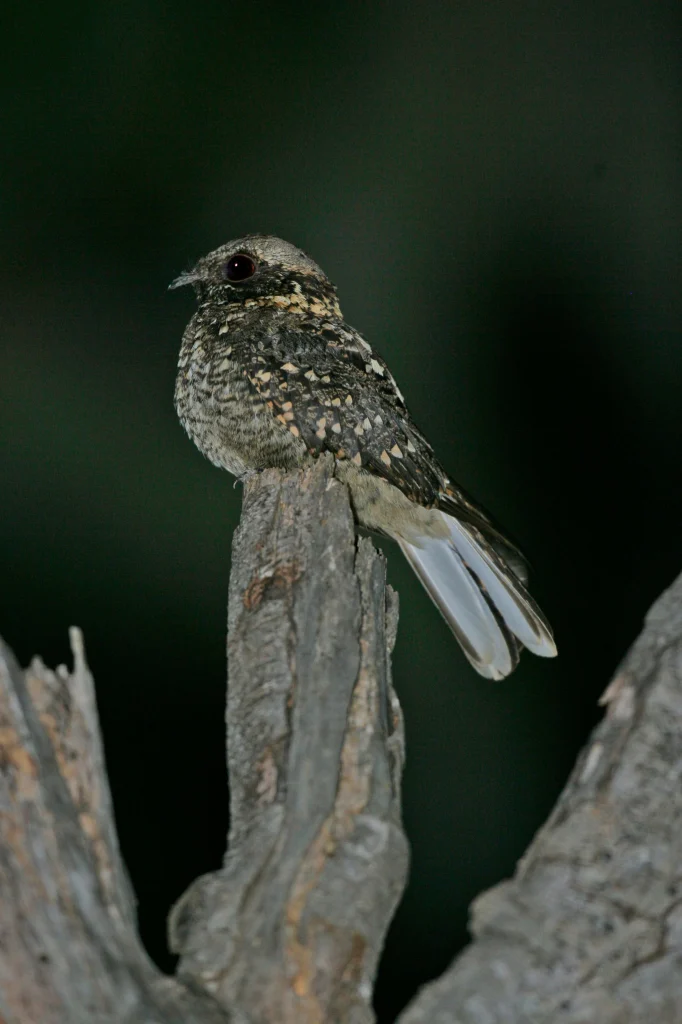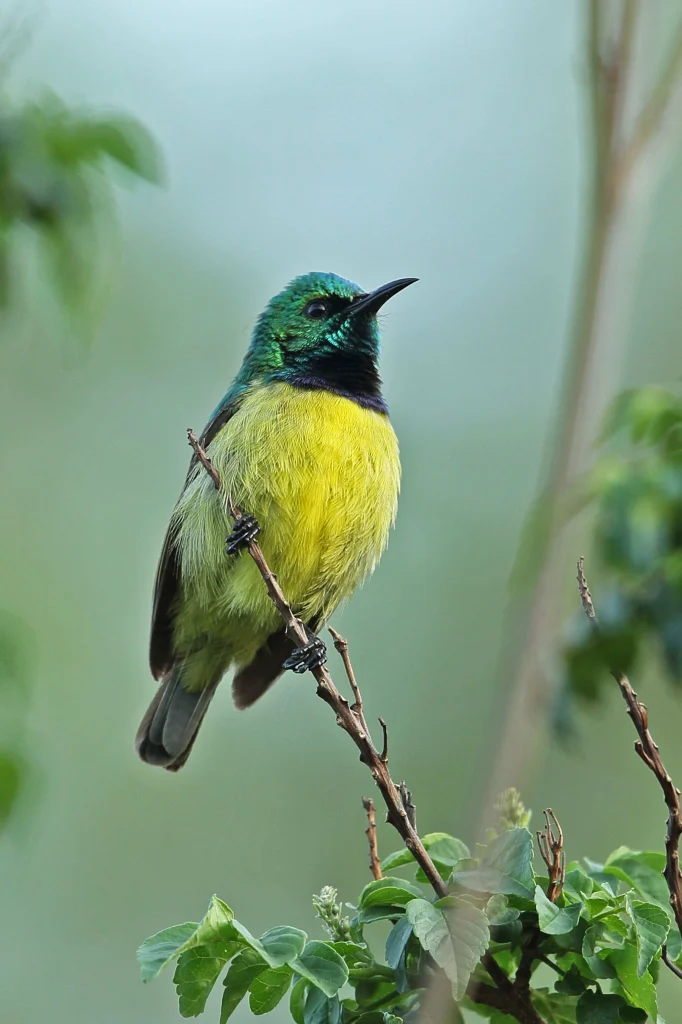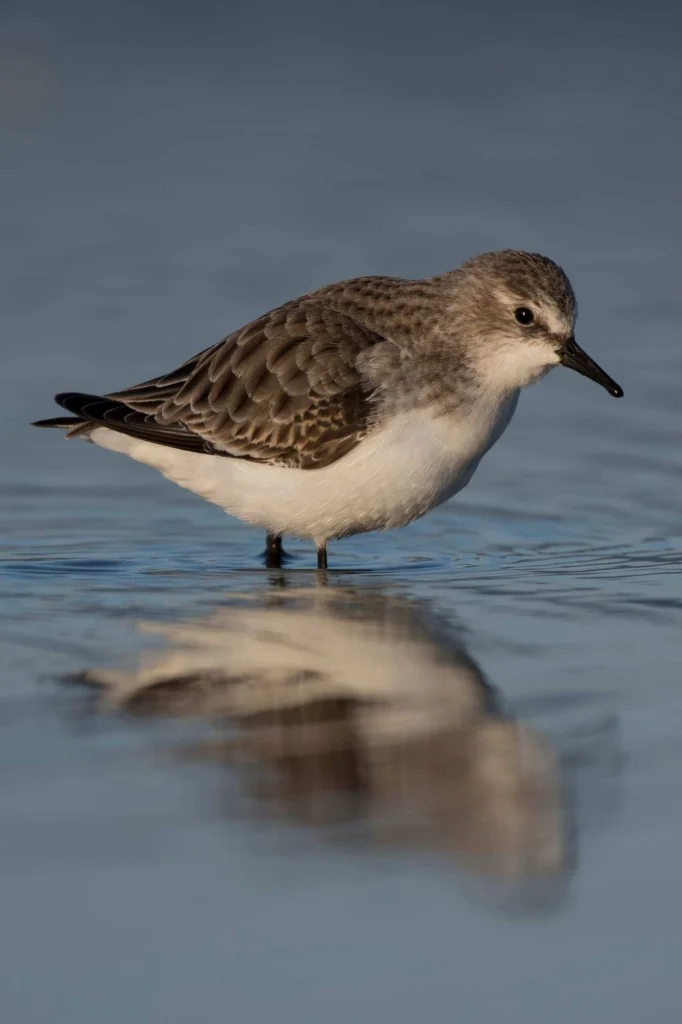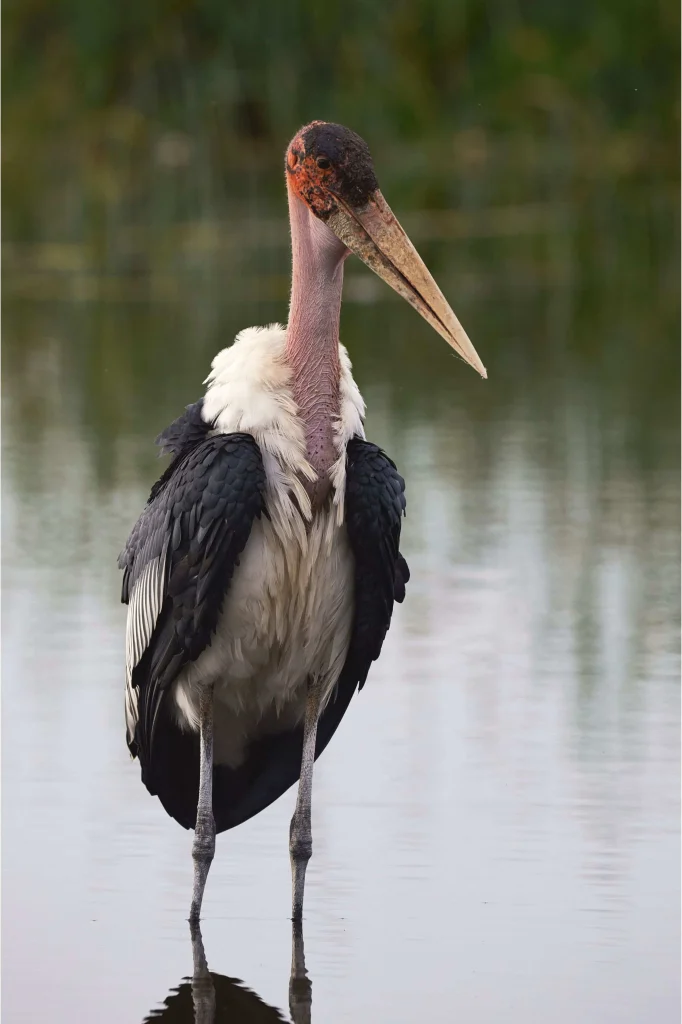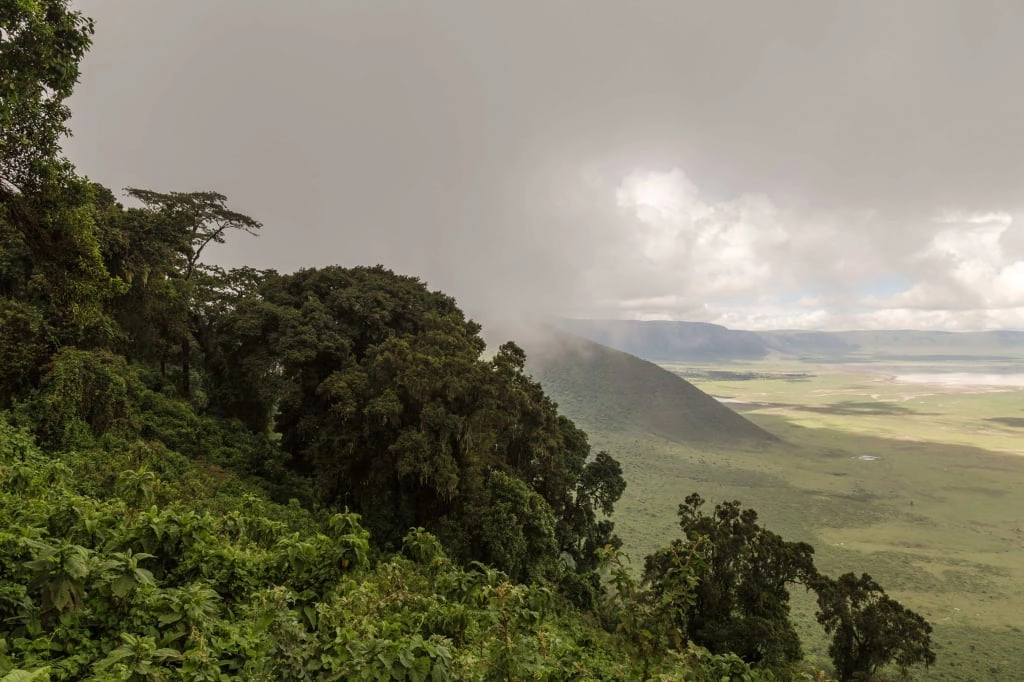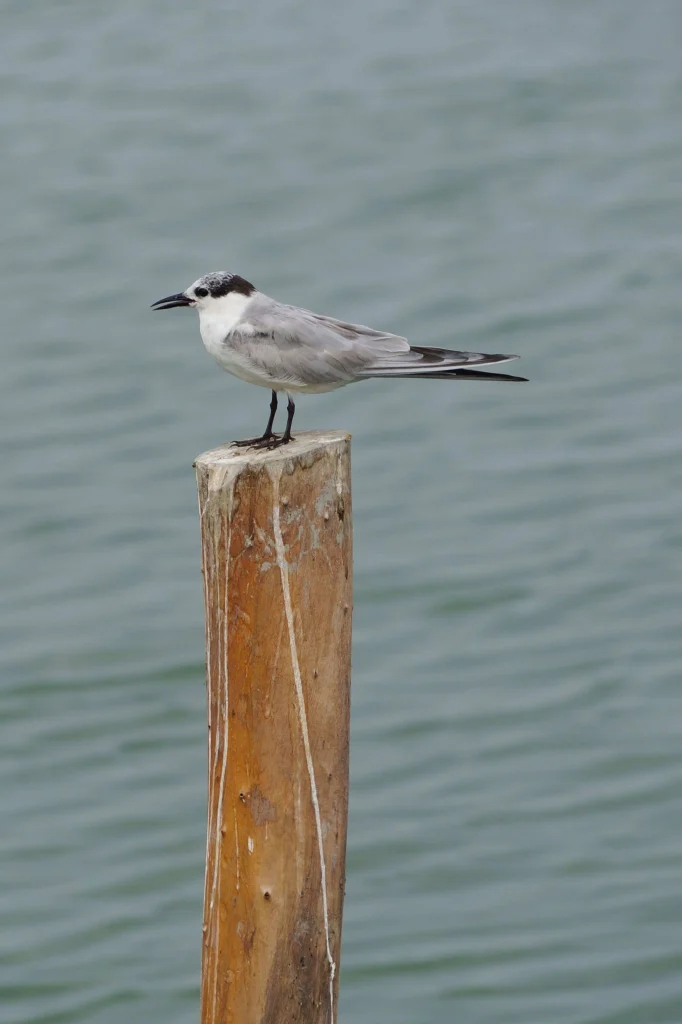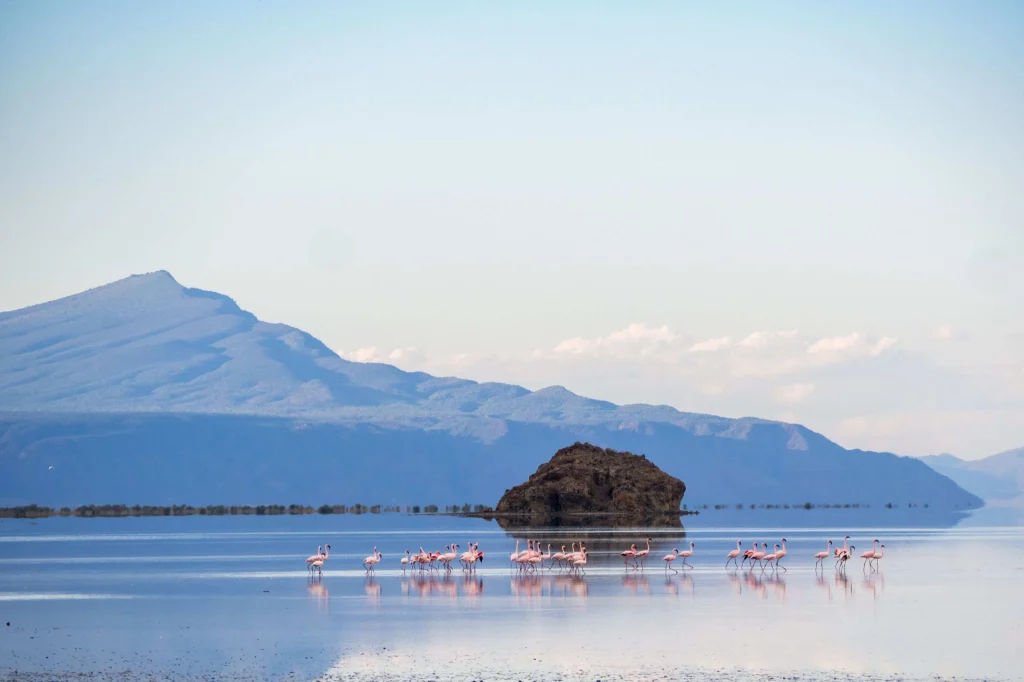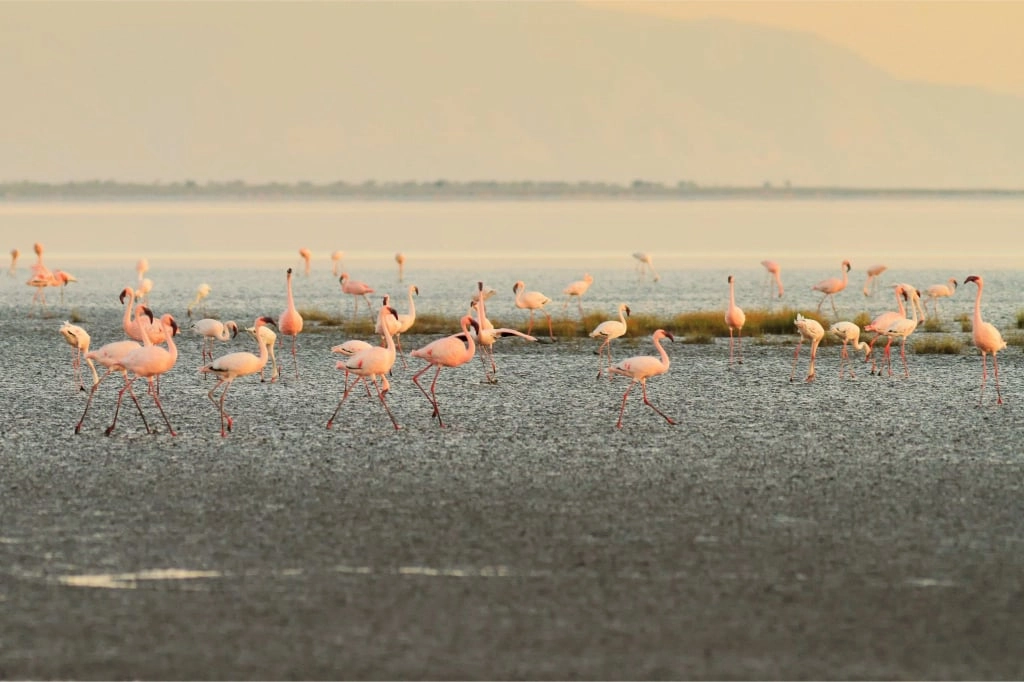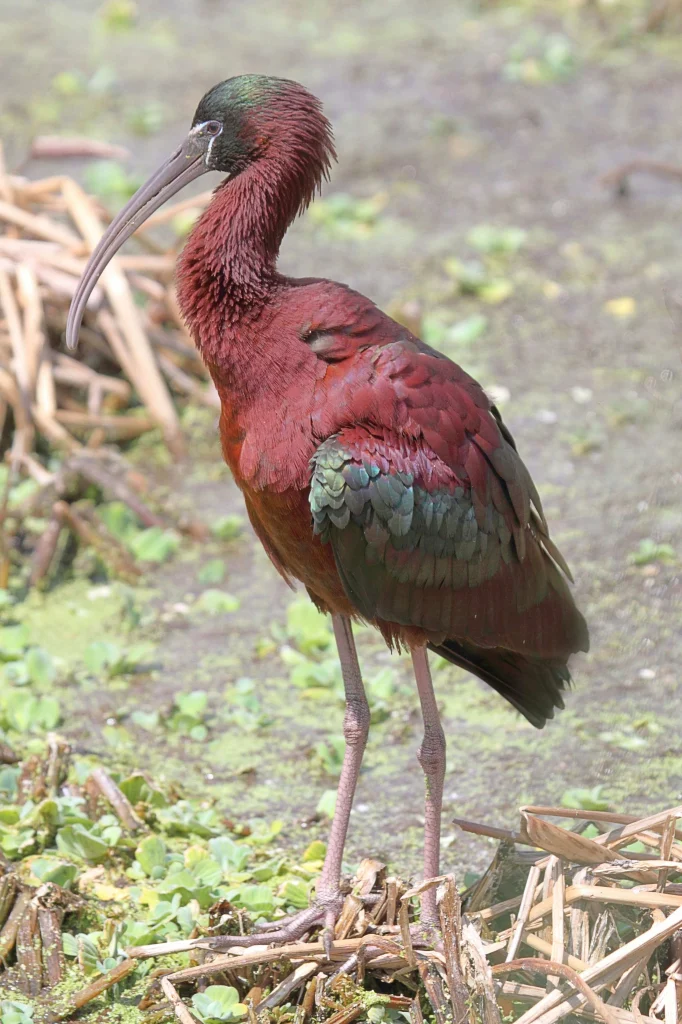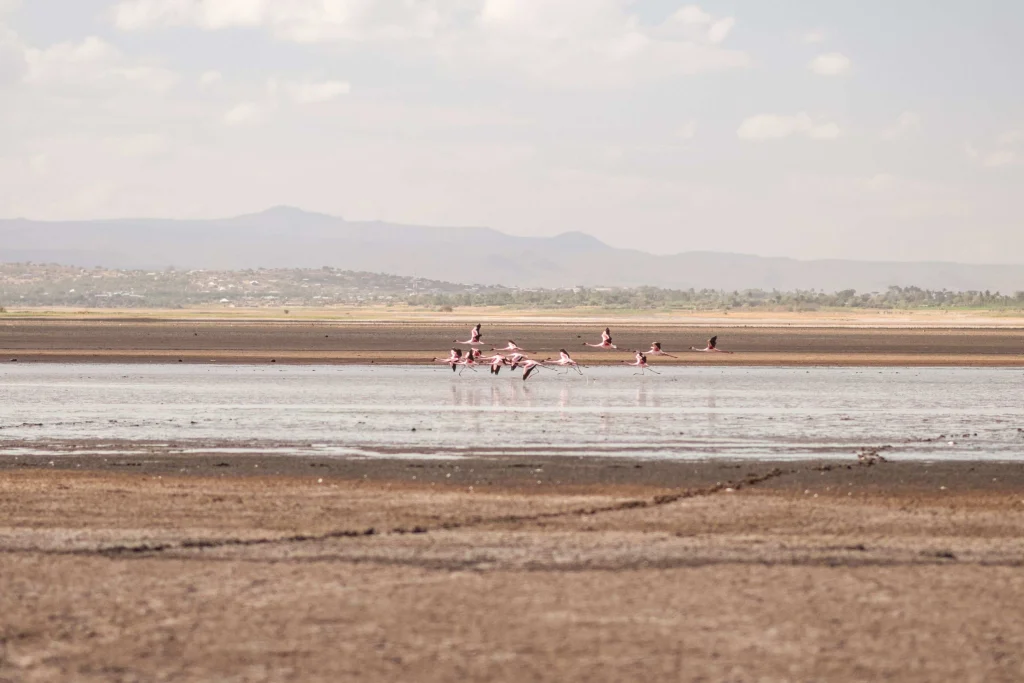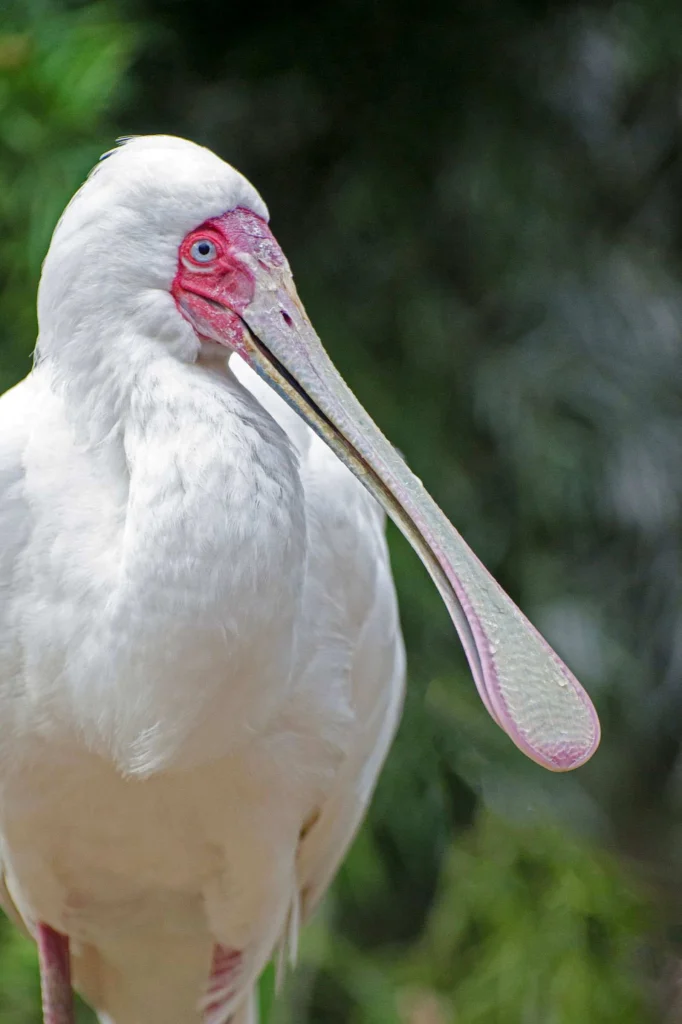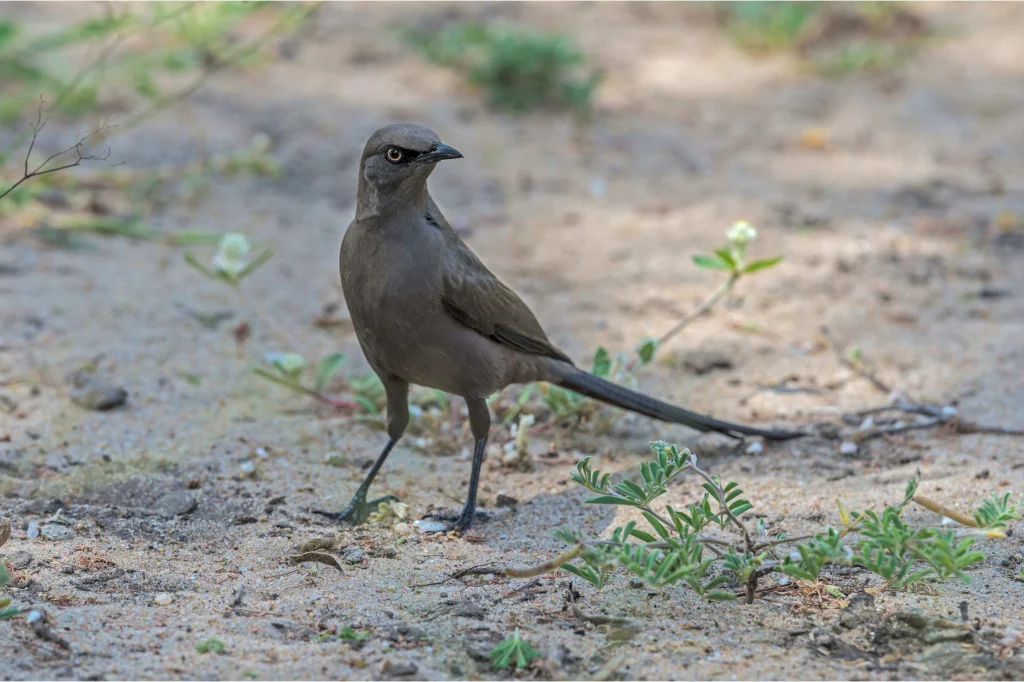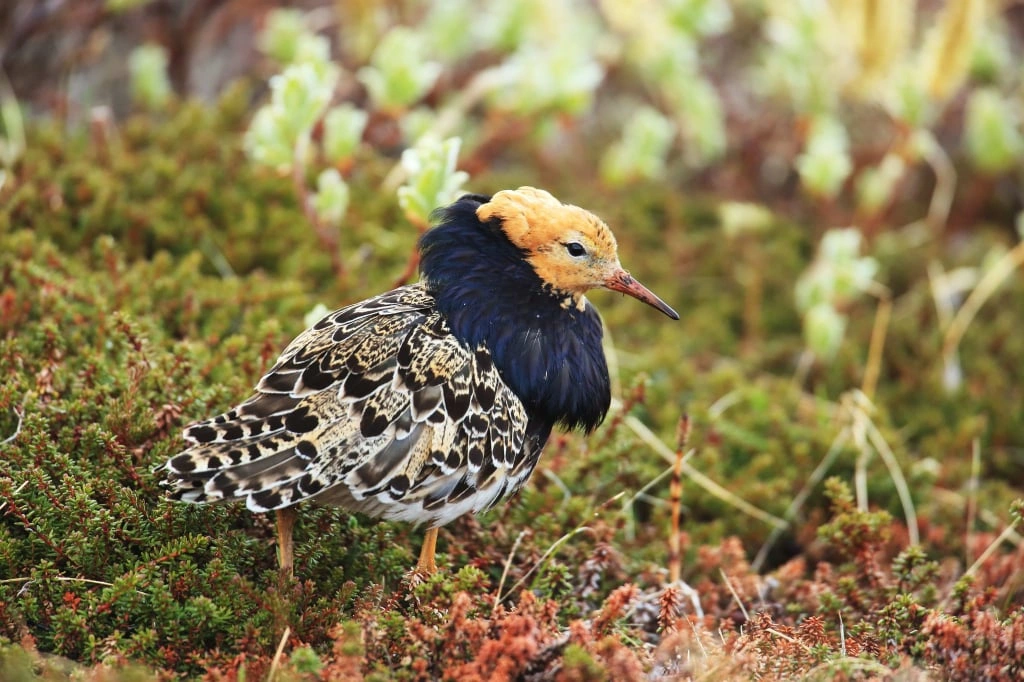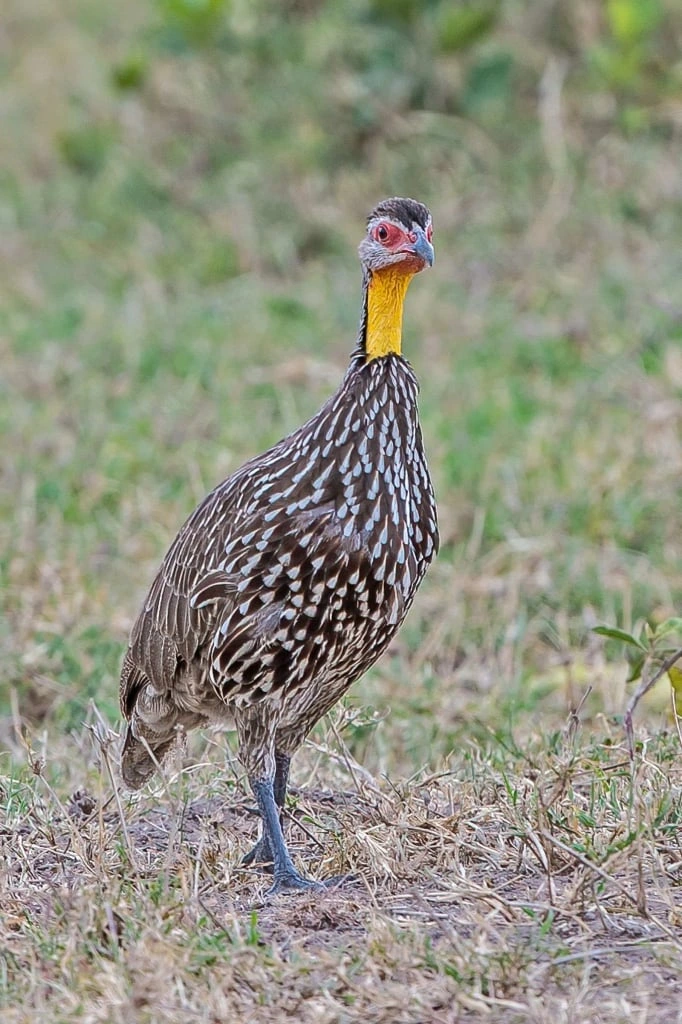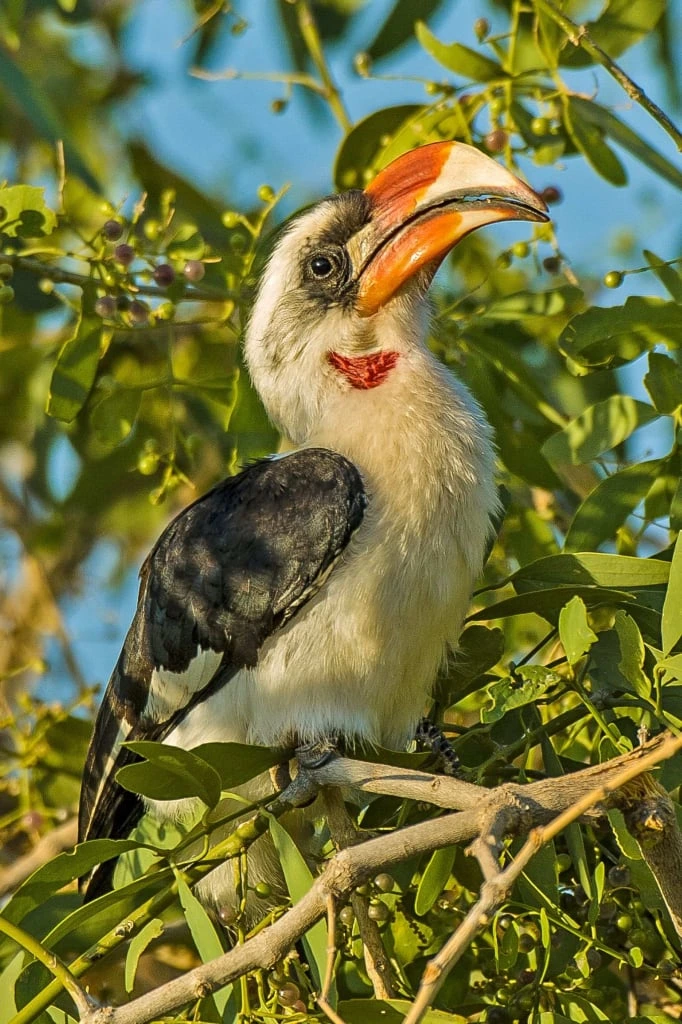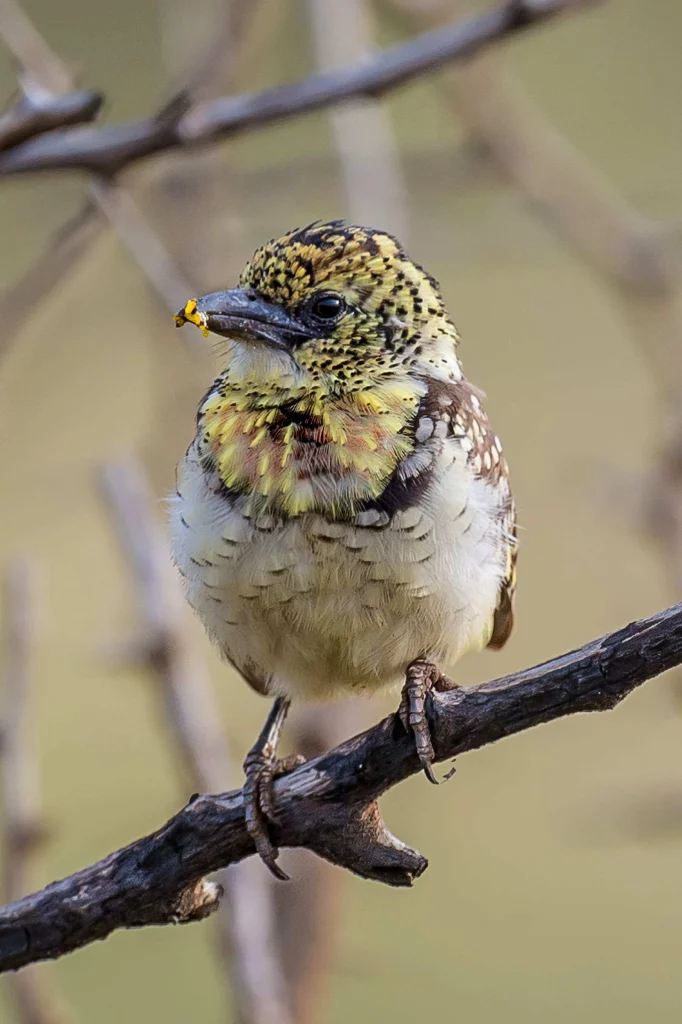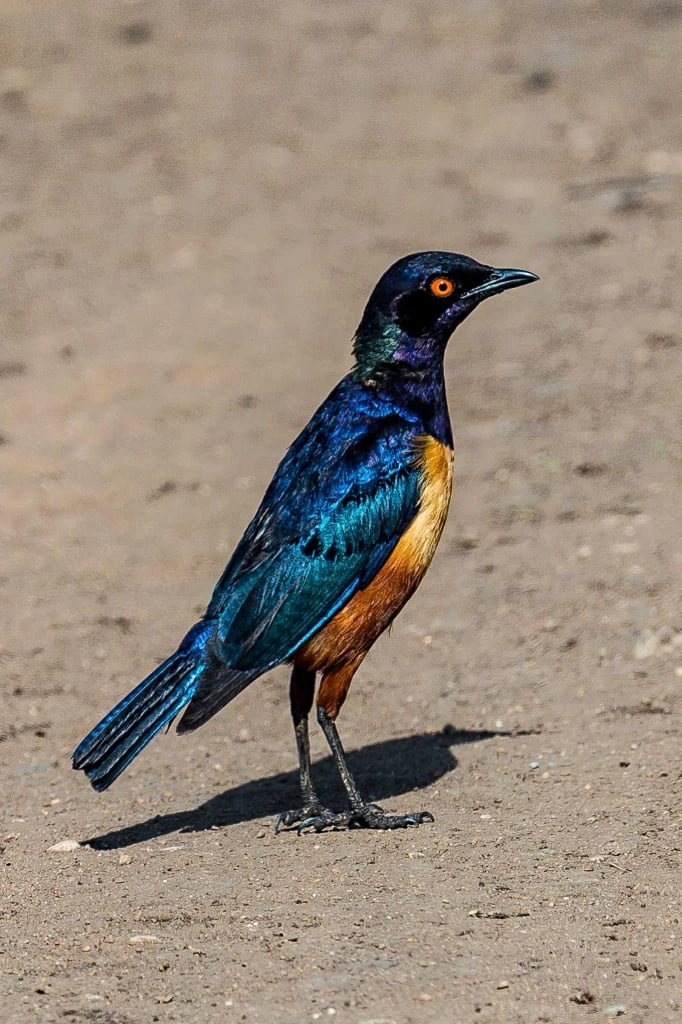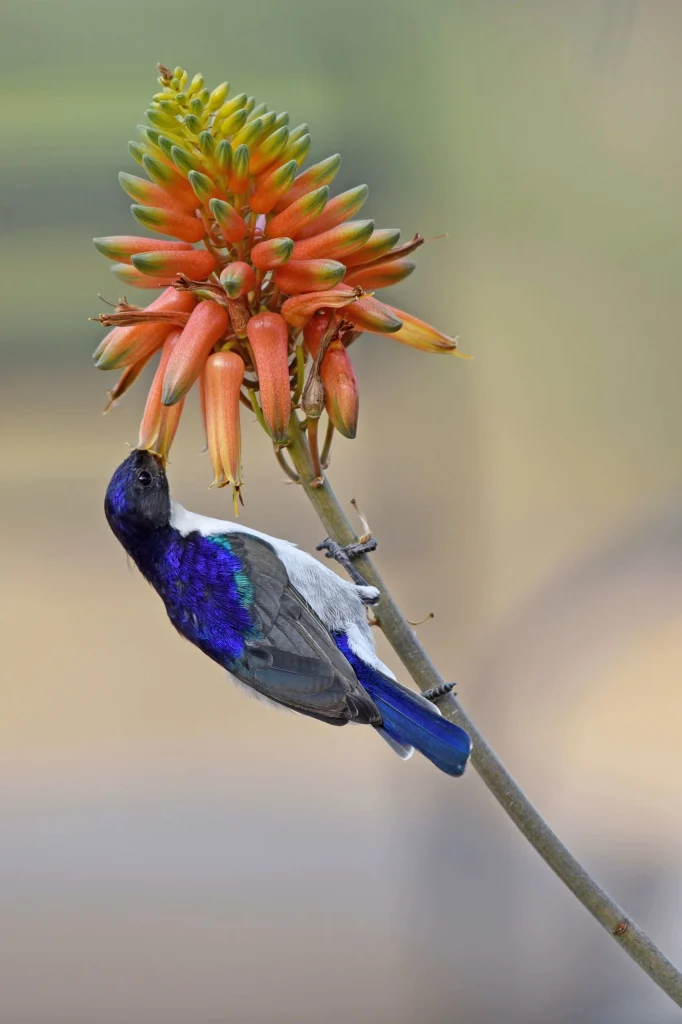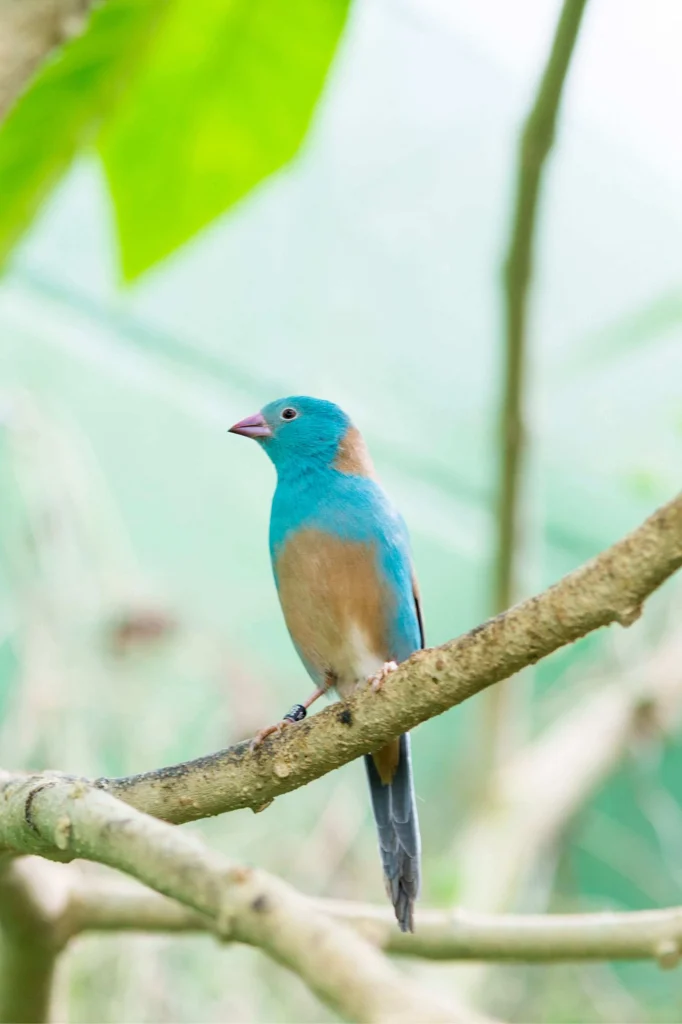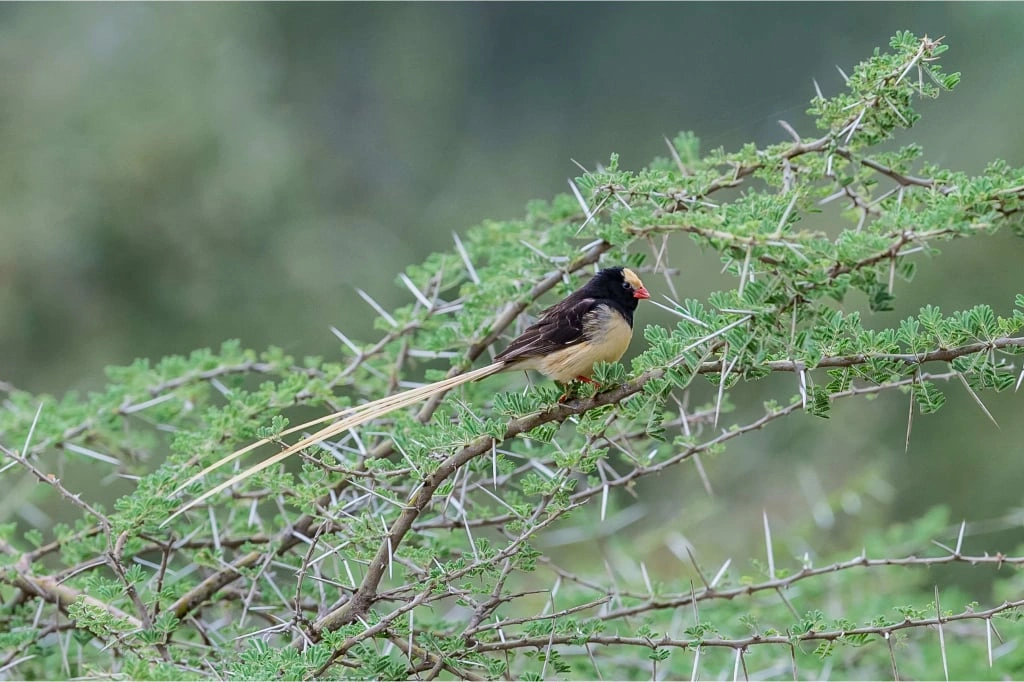Tanzania is known as a country with a great diversity of birds. While there are almost 11,000 species worldwide according to various sources, in Tanzania alone there are about 1,100 species, which is 10% of the world's bird diversity. This country is a birdwatching heaven.
When exploring Tanzania, you should start with the most popular national parks located in its northern part, near the city of Arusha, the tourist capital of the country. Here you will find the best infrastructure and travel itineraries, the most comfortable hotels, and the greatest number of recorded observations simply due to the large flow of tourists, among whom there are bird lovers. Even if you look at the top ten birdwatching spots in Tanzania, it turns out most of them are national parks and reserves in the north of Tanzania with 500-600 recorded species in each.
Serengeti National Park
Serengeti is the heart of protected wildlife areas in East Africa. The park stretches across the spacious plains of the central plateau between Africa's largest lake, Lake Victoria, and the Great Rift Valley. The plains are crisscrossed from west to east by great rivers: the Mbalageti, the branching Grumeti, and to the very north, the Mara. It is here that the legendary Great Migration, the circular migratory movement of millions of antelopes and zebras, takes place, which is both fascinating and incredibly picturesque.
A meticulous observer will find 600-700 species of birds here. You won't encounter so many species in one place anywhere else in Tanzania or neighboring Kenya. The only other place in Africa that can compete with the Serengeti is the Queen Elizabeth National Park in Uganda. But the advantage of the Serengeti is that it is surrounded by other biodiversity-rich wildlife areas that offer even more exciting birding opportunities.
Several dozen birds of prey can be seen here, such as African Fish Eagles (Haliaeetus vocifer). They prey on fish, ibis, storks, flamingos, and other waterfowl, and even on baby monitor lizards and crocodiles. You can also encounter Martial Eagles (Polemaetus bellicosus), whose victims are hares, hyraxes, monkeys, jackals, as well as young or smaller antelopes - a total of over 90 species of mammals. Moreover, Serengeti is home to ostriches, turacos, go-away-birds, herons and nightjars, parrots and lovebirds, oxpeckers, sunbirds, and many, many other birds. Alas, there are many species that have been given endangered status.
About a quarter of all species are migratory and come here from other parts of the world. So birdwatchers can meet their old acquaintances. Some of the most common species found in the Serengeti, among those familiar in Europe, are the Little Stint (Calidris minuta) and the White Stork (Ciconia ciconia), which come to Africa to spend what are considered cold months in Europe.
Perhaps it is the long migratory route of beautiful White Storks that provoked the folklore stories of storks bringing babies from somewhere far away. In the days of widespread slavery, the children of African slaves were told that white children were brought by storks and that black babies came from buzzard eggs. Alas, human prejudice is an age-old phenomenon. But such legends tell us of human awareness of the fact that birds in general migrate between continents. The storks in particular helped people to understand this. In 1822 a stork was found in Germany with a 75-centimeter African arrow stuck in the bird's throat. The German language even has a special word for such storks - pfeilstorch. A total of about 25 cases of storks found pierced by arrows have been documented in Europe.
Other well-known and frequent migrants in the Serengeti include the European Roller (Coracias garrulus) coming from Europe and South-West Asia, as well as the Barn Swallow (Hirundo rustica) and the Common Swift (Apus apus) that fly down from Eurasia. Many people will certainly be interested in the inhabitants of Africa: the Wattled Starling (Creatophora cinerea), Helmeted Guineafowl (Numida meleagris), Marabou Stork (Leptoptilos crumenifer), Lesser Flamingo (Phoeniconaias minor), African Openbill (Anastomus lamelligerus), and many other birds native to these fertile lands.
There are no local endemics in the Serengeti, but you might see some species considered endemic to Tanzania. These are Grey-breasted Spurfowl or Grey-breasted Francolin (Pternistis rufopictus), Tanzanian Red-billed Hornbill (Tockus ruahae), , Kilimanjaro White-eye (Zosterops eurycricotus), Rufous-Tailed Weaver (Histurgops ruficaudus), Tanzanian Masked Weaver (Ploceus reichardi), and the Yellow-collared Lovebird (Agapornis personatus). Representatives of some of these species are occasionally observed in neighboring countries near the borders, but in terms of ornithology, they are endemics of Tanzania.
West of the Serengeti is Africa's largest lake, Lake Victoria, which also attracts birds from other parts of the continent. It is especially interesting to explore the western shore of the lake, including the Minziro Forest Reserve. Locations on the southern shore of Victoria are also good for birdwatching, as are islands such as Rubondo, Saanane, and others. In addition, there are places directly related to the Serengeti in the ornithological sense. Those include at least three bays on the east coast of Lake Victoria. It is worth visiting those areas to see waterfowl. Reedbeds and big water, which are scarce on the plains of the Serengeti, are important to those birds and they find such environments in abundance on the lake shores.
Ngorongoro Conservation Area
A special wildlife reserve, Ngorongoro Protected Area, adjoins the Serengeti on the east side. Here eight volcanoes formed a cratered plateau. On its territory, there are four peaks rising above 3000 meters (10000 feet), as well as wetlands that attract birds and various animals. The most famous body of water here is the crater lake Magadi (Makati) at an altitude of 1700 meters (5600 feet). The lake is home to flamingos. The bottom of Ngorngoro Crater is teeming with wildlife: it is believed to contain the highest density of mammal predators in Africa, and the local lion population is particularly numerous and impressive.
More than 500 species of birds can be seen here in Ngorongoro. Waterfowl, primarily Lesser Flamingos, settle on the lakes and marshes of the reserve. The lakes also attract Cape Teals (Anas capensis) and Maccoa Ducks (Oxyura maccoa), which are becoming increasingly rare in East Africa. This applies to the crater lake, Empakai, as well as to lakes Ndutu (Lagaja) and Masek. Here you can also see several species of heron and rather unusual for the region African Rails (Rallus caerulescens) and Whiskered Terns (Chlidonias hybrida).
Cattle Egrets (Bubulcus ibis) are observed here in large numbers. These birds are believed to remove ticks from cattle and drive away flies, which helps fight disease in herds of herbivores. For this, people love Cattle Egrets on all five inhabited continents. Interestingly, the Tanzanian Maasai people use these birds as a sign that it's time to leave their settled habitat and move to a new one - as soon as they see a large concentration of egrets, they believe that drought is ahead, and therefore it's time to dismantle their homes and drive the cattle to more fertile lands.
The plains of Ngorongoro covered by low grasses are thought to be an important habitat for all seven species of vulture that live in East Africa. These are White-backed Vulture (Gyps africanus), Hooded Vulture (Necrosyrtes monachus), Lappet-faced Vulture or Nubian vulture (Torgos tracheliotos), White-headed Vulture (Trigonoceps occipitalis), Egyptian vulture, also known as Pharaoh's Chicken (Neophron percnopterus), Bearded Vulture (Gypaetus barbatus) and Palm-nut Vulture (Gypohierax angolensis). Unfortunately, all of them with the exception of the last two, have the status of endangered species, and some of them are in a critical situation. Apart from vultures, many other raptors also live in this wildlife-rich area.
Some people consider the Cape Crow (Corvus capensis) and the Brown-backed Woodpecker (Dendropicos obsoletus crateri) to be the most interesting bird species in the area. The populations of both species are considered unique to Tanzania and are concentrated just in the crater highlands.
A group of species endemic to Tanzania in Ngorongoro overlaps with endemics from the neighboring Serengeti. Those are the Grey-breasted Spurfowl (Pternistis rufopictus), Tanzanian Red-billed Hornbill (Tockus ruahae), Kilimanjaro White-eye (Zosterops eurycricotus), Yellow-collared Lovebird (Agapornis personatus) and the Rufous-tailed Weaver (Histurgops ruficaudus). All these species can be found right in the Ngorongoro Crater.
A species unusual for Ngorongoro is the Gray-crested Helmetshrike (Prionops poliolophus), but records of them appear rarely and have not been updated for a long time. The scientific community suggests that helmetshrikes, inhabitants of Tanzania and Kenya, may have migrated to a neighboring area, the Maswa Game Reserve. It adjoins the Serengeti and Ngorongoro and is a part of that larger ecosystem, but has no current bird database of its own, so we'll skip it here.
Lake Natron
North of Ngorongoro lies the famous Lake Natron, known for its pink or red-looking waters when filmed from above. This color is due to the fact that billions of Artemia salina crustaceans, only a few millimeters long, live in the water. They thrive in salty waters, and Natron is a salty alkaline lake. Nearby is Ol Doinyo Lengai, the only volcano in the world that produces natrocarbonatite lava composed mainly of sodium carbonate, which is dissolved in the lake.
Although Lake Natron reaches 52 kilometers (35.4 miles) in length and during the high-water period even extends far beyond the Tanzanian border into neighboring Kenya, it is not a deep lake. Its maximum depth is 2-3 meters (6.6-9.8 feet). In the world of bird lovers, this Tanzanian lake is known for the highest number of Lesser Flamingos - the largest population of these birds in the world breed here. According to some estimates, over 80% of Lesser Flamingos living on our planet are born on Natron. As you might know, the reason for the pinkish color of flamingo plumage is that they eat food containing a lot of carotenoids. There are a lot of them in the microscopic algae eaten by Artemia crustaceans (brine shrimp), which, in turn, become the main diet of flamingos.
You may have seen the fascinating story about flamingos in the movie “The Crimson Wing: Mystery of the Flamingos”, released by Disneynature and filmed here at Lake Natron. It has and good reviews. We recommend watching it to those interested in birds, those worried about conservation, and anyone who likes beautiful wildlife documentaries. Unfortunately, the species of Lesser Flamingo (Phoeniconaias minor) is classified as Near Threatened. It's all the more important to be aware of the threats to this ecosystem, to visit Lake Natron, enjoy birdwatching, and to draw as much attention to it as possible, especially in light of rumors of plans to build a soda plant on the lake.
In addition to flamingos, the lake is home to waterfowl such as the Little Stint (Calidris minuta), the Chestnut-banded Plover (Charadrius pallidus), which also prefers salty and alkaline waters, and the Glossy Ibis (Plegadis falcinellus). Interestingly, in past years there were tens of thousands of Abdim's Storks (Ciconia abdimii) here, who are indigenous to Africa. It is more typical for them to migrate to the very south of Tanzania and much further south, where they spend most of the year, returning to areas north of the equator to breed.
Another small and beautiful bird, the Somali Bunting (Emberiza poliopleura), also appears at Lake Natron, although its typical range is further to the east. Such deviations from standard ornithological data will be especially interesting to confirm with your own sightings. One of the most common birds here is the White-winged Tern (Chlidonias leucopterus), which comes from Europe and Asia to spend the winter here in Africa. In total, more than 200 species can be observed at and around Lake Natron, primarily in the Engaruka basin, although exact counts have not been made for this location.
Lake Eyasi
South of Ngorongoro there is another shallow salt lake, Lake Eyasi. During dry periods it can dry up completely, so local people cross it on foot. During the most generous (precipitation-wise) periods the lake is no deeper than one meter (about 3 feet), although in some years there is enough water in Eyasi to attract hippos from the neighboring Serengeti. It is up to 80 kilometers (50 miles) long. But as a rule, there is still enough water in the lake to sustain waterfowl.
Flamingos enjoy the waters of the lake during their migration. Other waterfowl also live here. Among them is the Yellow-billed Stork (Mycteria ibis), which looks like an ibis, at first mistakenly attributed to them and even so named, although it belongs to storks. Here you can also meet The Common Snipe (Gallinago gallinago), Temminck's Stint (Calidris temminckii), and the African Spoonbill (Platalea alba) which, as its name suggests, has a spoon-shaped beak. The bird dips it into the water and swinging it from side to side catches small fish, mollusks, crustaceans, and larvae.
As for Tanzanian endemics, on the eastern shore of Lake Eyasi there were sightings of Fisher's Lovebirds (Agapornis fischeri). These are very beautiful birds with richly colored plumage. Because of their striking appearance, they like to be kept in captivity as pets. However, it isn’t a great idea - these free birds need a lot of space for their rapid flights. In cages and confined areas, wild birds suffer and start to get sick.
Strictly speaking, these endemics of Tanzania may temporarily move to neighboring Rwanda and Burundi in dry years. Still, these colorful parrots, named after a German explorer of Africa - , remain on the list of endemic species for Tanzania.
Another endemic bird seen on the banks of Eyasi is the Ashy Starling (Lamprotornis unicolor). There is confusion about its classification, because originally the British ornithologist George Ernest Shelley, who described many African species, assigned the name Cosmopsarus unicolor to a specimen sent from East Africa. The species was later transferred to the genus Lamprotornis because like other members of the genus, it has a shiny upper body due to a special arrangement of melanin in its feathers.
The current name of this bird uses the word "lamprotornis" derived from the Greek "lamprotēs" meaning "shining, bright, radiant”. This really describes the shimmering feathers of this starling in the sun and fully justifies its Latin name.
A typical inhabitant of East Africa, the Karamoja Apalis (Apalis karamojae), was also seen near the lake. The total number of species found at Eyasi, however, is not precisely known. All the more interesting to explore this area, especially during periods of high water.
Yaida Chini
South of Lake Eyasi lies the Yaeda Valley (Yaida Valley). This is an area of so-called seasonal marshes, where pastures in years of heavy rains are flooded, turning the valley into marshes. Waterfowl live in the thickets, and other species of bird can be found on and near the Mbulu Highlands, where acacia and baobabs grow.
An isolated group of people called Hadza live in this area, who largely preserve the traditional lifestyle of hunter-gatherers. They hunt the large animals of the region, and as for the birds, they actively collect their eggs. They are also known to kill the birds themselves, including their chicks, and consider their meat a delicacy. The Hadza are one of the most oppressed peoples of Tanzania, who have lost vast territories. On the one hand, it happened due to the oppression by the more active neighboring tribes, and on the other hand, due to restrictions imposed on hunter-gatherers by the state, interested in creating reserves and hunting grounds.
The Hadza and some birds have a very interesting mutually beneficial relationship. We are talking about birds such as the Greater Honeyguide (Indicator indicator). It is one of the few birds that can digest beeswax. The honeyguide got its name for its ability to literally point people to the hives of wild bees. It is used by many peoples, including the Hadza, whose diet includes honey because of its caloric value. People have learned to imitate the sounds of these birds to call them to the trees. The honeyguides fly in and show the location of the hive. Gatherers smoke the bees, cut open the hive, and take the honey, leaving the tidbits of wax for the honeyguides.
In this way, humans and birds find themselves useful to each other. Further interactions are interesting. In the mythology of some peoples, there is a belief that a bird that has shown the hive must necessarily be given some wax, otherwise, in retaliation, the next time it will lead the man to a dangerous predator. However, Hadza often take honey and on purpose take away or bury the wax on the spot, so that the birds do not get anything. Then the honeyguides remain hungry, which means that they are again ready to quickly show a new place with bees. In Kenya, birds have been known to stop showing hives to people after experiencing such “betrayal”.
In the marshy grasses of the valley, you can find other “guides”: Cattle Egrets (Bubulcus ibis), which warn the Maasai herders of impending droughts. As soon as the Maasai see many herons, they decide that this is a sure sign of drought and move to a new location. Here you also see the Glossy Ibis (Plegadis falcinellus), and the Black-necked Grebe (Podiceps nigricollis). Interestingly, although the Black-necked Grebe tends to avoid flying, it still travels in the air as far as 6000km (3700 miles) during migration. Yaida Chini is home to many other species of birds too: the Knob-billed Duck (Sarkidiornis melanotos), the Fulvous Whistling Duck (Dendrocygna bicolor), Black-tailed Godwits (Limosa limosa) and Ruffs (Calidris pugnax), whose males acquire an impressive mating attire during breeding that includes bright coloration, tufts of feathers on the head and a magnificent collar on the neck. In fact, the name “ruff” means an exaggerated collar fashionable from the mid-sixteenth century to the mid-seventeenth century.
Wembere Steppe
There are vast areas in central Tanzania that are considered Important Bird and Biodiversity Areas (IBA). That is the floodplain of the Vembere River, which carries its waters northward and flows into Lake Eyasi. It creates wetlands that are of interest to birds, but those territories are also actively used as pasture. Wembere Steppe needs to be explored further and the list of bird species here is yet to be clarified. Less than 200 species have been recorded here so far. Much of the data has not been updated since the 1960s.
From the more recent data, we know that the Black-faced Sandgrouse (Pterocles decoratus), Yellow-necked Spurfowl (Pternistis leucoscepus), and the peculiar-looking Von der Decken's Hornbill (Tockus deckeni) live in the floodplain of the Vembere River.
The beautiful Usambiro Barbet (Trachyphonus usambiro) also lives here among other colorful birds. It can be found in some sources under the scientific name Trachyphonus darnaudii due to the fact that the barbet was previously considered its subspecies. The Fischer's Lovebird (Agapornis fischeri) is distinguished by its attractive appearance and is easy to spot. Hildebrandt's Starling (Lamprotornis hildebrandti), named after the German botanist and explorer of African nature Johann Maria Hildebrandt, impresses with its colorful plumage. This bird is endemic to East Africa, living only in two countries, Tanzania and neighboring Kenya. The longer you look at its shimmering with metallic luster multicolored feathers, the more it seems as if you are looking at some mythical “rainbow bird”.
The Eastern Violet-backed Sunbird (Anthreptes orientalis) is another beautiful inhabitant of East African savannahs. It is interesting to watch the White-headed Buffalo Weaver (Dinemellia dinemelli), which received its English name for following buffaloes and hunting for insects attracted by large animals. This is a good clue as to where to look for these birds. Any birdwatcher will be pleased to meet the Blue-capped Cordon-bleu (Uraeginthus cyanocephalus). This is a very beautiful bird with a nice blue plumage color.
Taking a good picture of the Steel-blue Whydah (Vidua hypocherina) and the Straw-tailed Whydah (Vidua fischeri) can be considered a worthy prize. Their long 30-cm tails are an amazing sight. These birds like to spend time on prickly bushes.
Of the raptors in this area, the Eastern Pale Chanting Goshawk (Melierax poliopterus) is known to make melodious cries, especially during the nesting period. There should also be waterfowl in the Vembere River floodplain, but nothing is known about the current state of their populations.
There are several small lakes near the Vembere Steppe: Kitangiri, Singida, Kindai, and Balangida Lehu. They lie to the south of the large Lake Eyasi. Those lakes are all very important for birds, and flocks of many different species nest on their shores. There is some overlap between the species of Lake Eyasi and steppe dwellers. Many waterfowl are observed here, and the presence of both flamingo species has been noted on each of the lakes. There is no precise data on the populations on the lakes, as ornithologists do not often visit these places. We will not describe these locations in detail, but the curious birdwatcher should not miss a chance to observe bird life on these bodies of water.
In addition to the Serengeti, Ngorongoro, and the above mentioned lakes, Tarangire National Park and Lake Manyara, the mountain forest national parks of Arusha and Kilimanjaro, as well as the Mkomazi National Park can also be referred to when we’re talking about the northern birdwatching locations. To find out more sbout other regions of Tanzania and interesting places for birdwatchers, make sure to read our article "Tanzania. Top 10 Locations for Birdwatching"!
All content on Altezza Travel is created with expert insights and thorough research, in line with our Editorial Policy.
Want to know more about Tanzania adventures?
Get in touch with our team! We've explored all the top destinations across Tanzania. Our Kilimanjaro-based adventure consultants are ready to share tips and help you plan your unforgettable journey.















